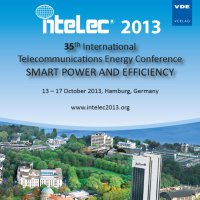Efficient powering of access network elements using remote powering strategy
Conference: Intelec 2013 - 35th International Telecommunications Energy Conference, SMART POWER AND EFFICIENCY
10/13/2013 - 10/17/2013 at Hamburg, Deutschland
Proceedings: Intelec 2013
Pages: 5Language: englishTyp: PDF
Personal VDE Members are entitled to a 10% discount on this title
Authors:
Blondel, E.; Bischoff, J.-C. (Swisscom AG, Bern, Switzerland)
Abstract:
More than 10 years ago explorations on powering strategy for access network using “higher voltage up to 1000 V” was made at Swisscom Laboratory in collaboration with Eurescom [5][6]and the FS-VDSL group [3][4]. Papers, reports, field trials, demonstrators were set-up to demonstrate the interest of such Technology. Contributions were written for Intelec and Telescon conferences. It has taken some time to implement new ideas, but now it becomes reality. Today, the demand and offer for broadband Internet services increases drastically More and more applications like TV on demand, streaming services, online gaming or entertainment are very bandwidth hungry. The target of 100Mbit for everyone has been already set. To face the competitors, it is necessary to follow this market trend. While FTTH is the ultimate access network technology, copper based solutions can be deployed faster and at lower cost. The price to pay for these very high bandwidths is the shortening of the usable copper loops and the necessity to bring the active broadband nodes closer to the customers. In the architecture called FTTS (Fiber To The Street), the broadband node (mCAN) is placed in a man-hole. The rugged climatic conditions don’t permit the use of standard hardware. Extended temperature range, water and mud are the key points for the hardware design. Supplying sufficient power with reduced power losses and high reliability to these nodes becomes very challenging. The space inside the case, operational and environmental parameters do not allow the use of batteries in such harsh conditions. A main decision was to use the remote powering strategy. Company guidelines and rules apply for the backup time. High efficiency converters are used for the CO equipment and the design of the powering lines is designed with maximum additional 10 W losses per powering circuit target. These restrictions are met with the use of spare copper pairs for remote powering.


